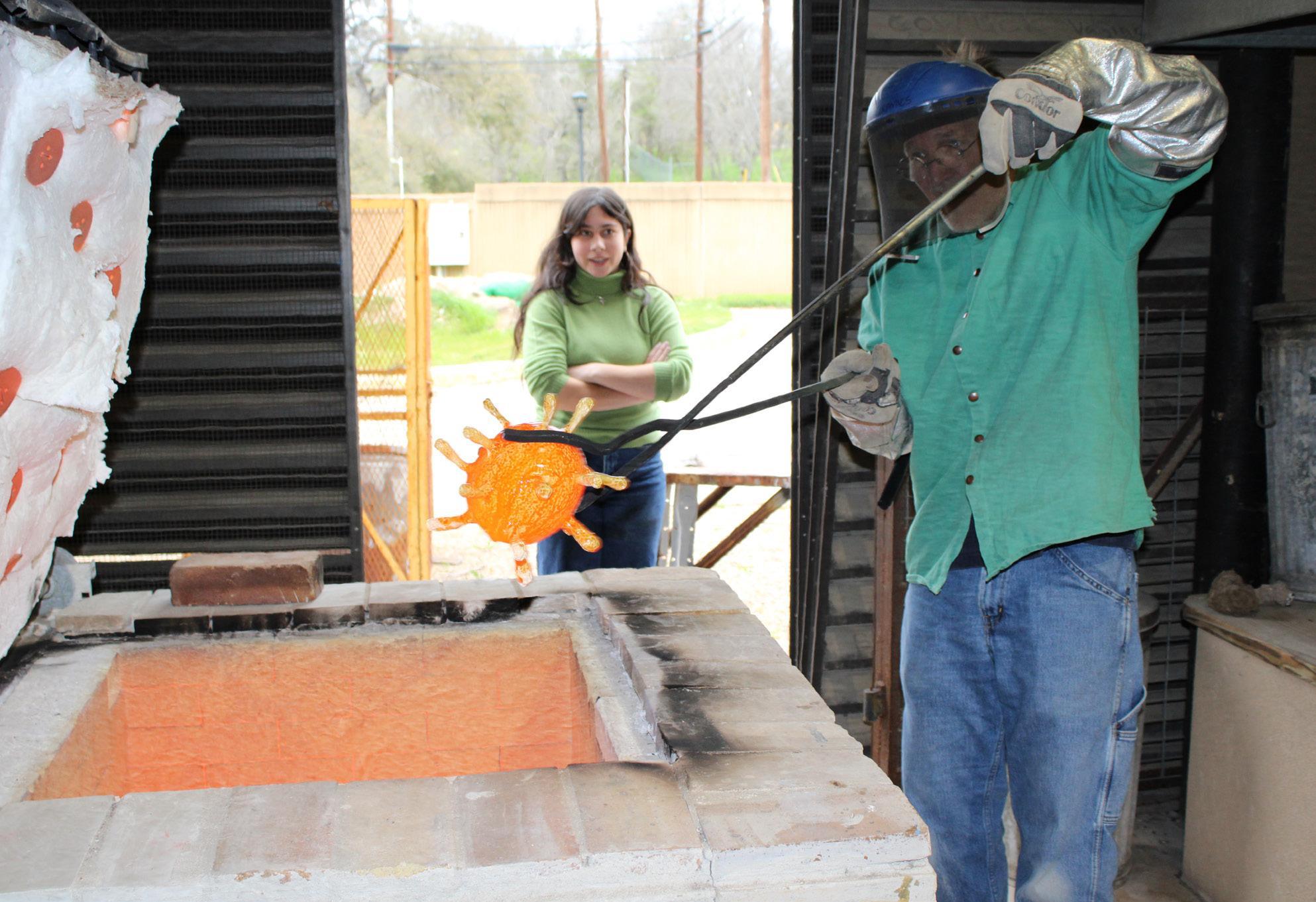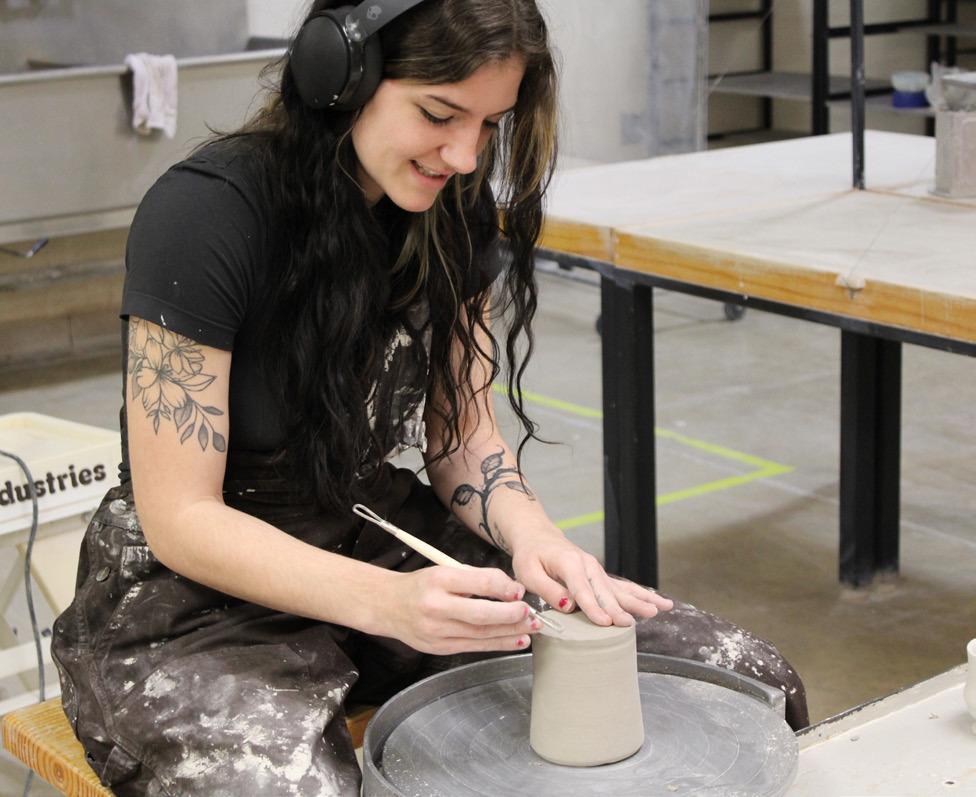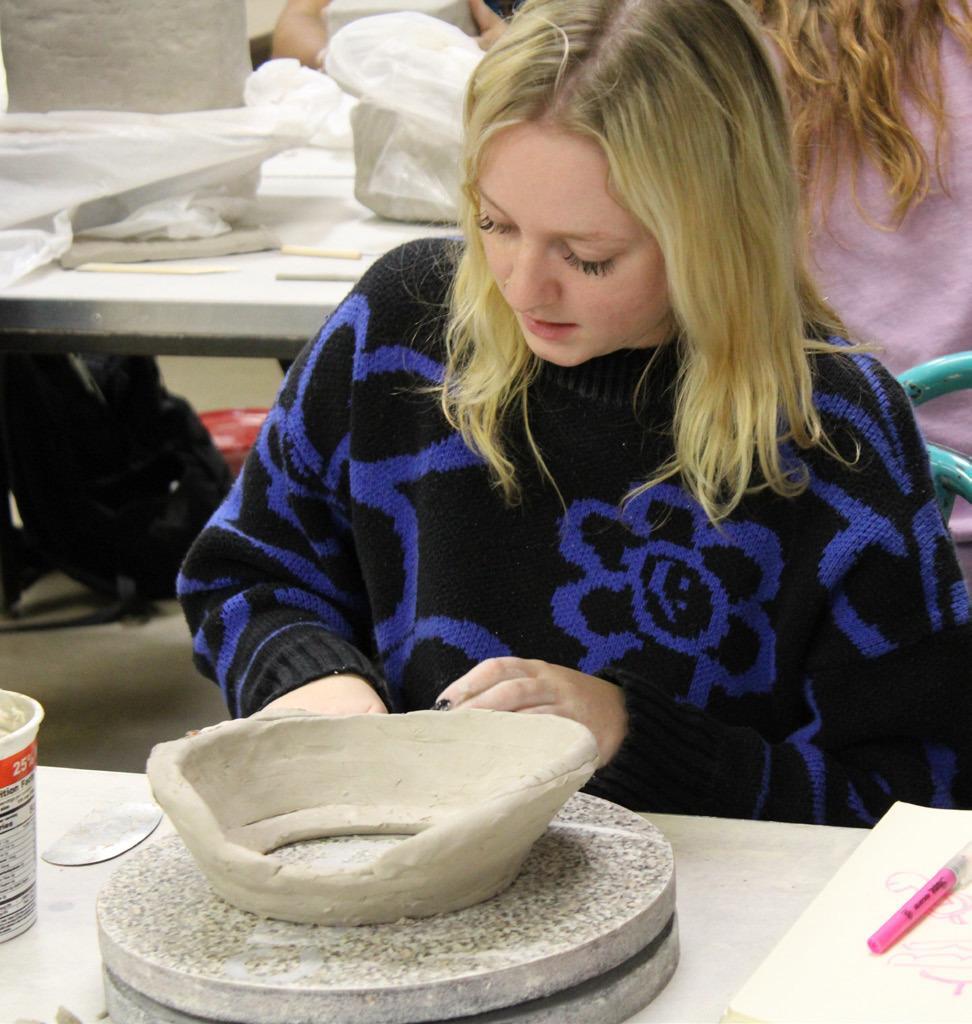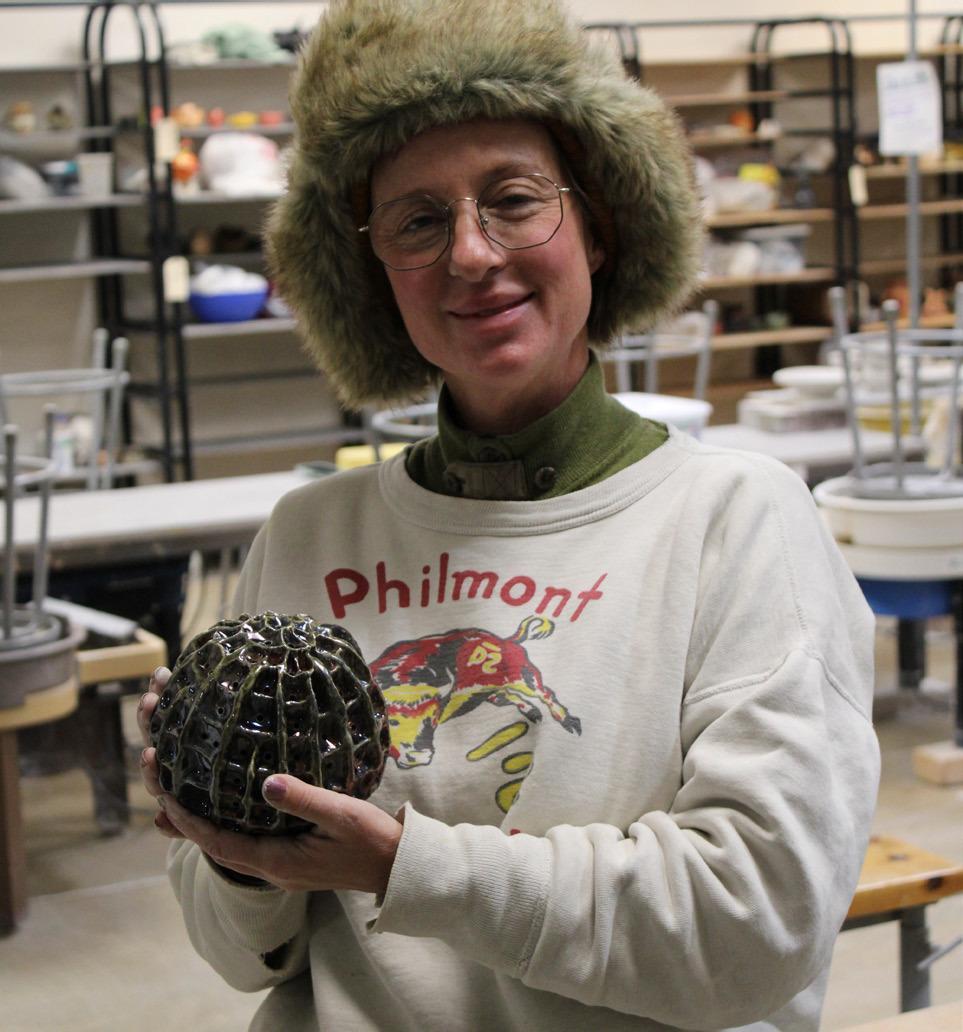

Texas State students learn about ceramics, one of the oldest art forms. Above, Tom May, Texas State University School of Art and Design lecturer, pulls a 2,000-degree piece out of the kiln. Below, Kendall Harvey works with clay on the wheel.
Daily Record photo by Shannon West.

Kennedy Kindred rolls clay to add to a piece of pottery.
Daily Record photo by Shannon West.

Kassie Brown shows off her recent Ceramics project meant to resemble a pathogen.
Daily Record photo by Shannon.
WHEELS IN MOTION
Ceramics is one of the oldest art forms, dating back many thousands of years BC, though the exact time period varies across different sources. Clay is a unique medium, as it can be used solely for beauty but can be functional as well. Tom May, a lecturer for the Texas State University School of Art and Design, is teaching students how to form, carve, glaze and fire this versatile material.
“Clay is unique, because it has been around for so long,” May said. “Humans have been playing with it for about 30,000 years.”
May said he’s always been interested in art and took courses all through elementary and high school. He’s originally from Chicago, where he was able to take courses as an advanced high school art student. Many of the courses were on photography at the Art Institute of Chicago. He said he later opened a screen printing business, which he operated for around 20 years until he decided to go back to school as a “nontraditional” student to earn an art degree. College is where he took his first ceramics class “and just never seemed to leave.”
Before accepting the job at TXST, May was employed at Austin Community College where he worked with a potter named Ishmael H. Soto.
“He really made me more interested in ceramics, beyond just the idea of making things, but also the community that surrounds ceramics, learning firing theory [and] glaze calculations,” May said. “It filled a lot of voids that I didn’t get just in painting and drawing.”
In May’s personal portfolio, he’s interested in the concepts of function and disposability.
“Disposability not only of ready made objects but also humans, and how, as a society — in the Western culture anyway — we find that things lose their value or worth the older they get,” May said. “Though they may function perfectly fine, we tend to replace them with something new — thinking new is better. So my work revolves around the idea that I want to save that piece that has been considered useless and repurpose it new in a clay material.”
One of May's projects involved taking photos of trash and construction materials along Interstate 35 and recreating those objects using clay.
'For example, [I took] a plastic gas can and turned that into a ceramic gas can that looks exactly like the plastic one, only it was made out of a ceramic material, and now it could function as a tea pot or a cup,” May said. “Some of the others would be an old paint can that was transformed into a lit up container that could contain items inside where the used paintbrush became part of the lid. So [I’m interested in] bringing new life to disposed items and making them more precious by remaking them out of a different material.”
May teaches Beginning Ceramics, Intermediate Ceramics and one of the Advanced Ceramics Courses currently at TXST. He said he teaches technique along with concept. So when progressing from beginning to advanced courses, each skill builds upon the next.
“The skill level improves as we move through each of the semesters. We add a little bit more complexity in terms of technology, in terms of technical experience with the clay. They explore how to calculate glazes in clay. They explore how to fire both atmospheric type firing as well as electric firing. And then the projects themselves become a little more complex,” May said. “Everybody's interest as they move from beginning to intermediate to advanced, their ideas of clay and what it can do for them in an artistic way changes. And what they need to know changes.”
May recently taught students how to do Raku, which he said is a Japanese technique of firing that was introduced to the United States in the 60s by Paul Edmund Soldner. But Soldner changed the process.
“What the Japanese would do is during the tea ceremony they would quickly fire tea bowls to temperature, and when it got to the correct temperature — somewhere around 2,000 degrees — they opened the kiln, they removed the pots and would submerge it in saltwater. And while the bowls were still warm, they would serve tea,” May said. 'The American version of that is we fire to about 2,000 degrees. … We open the kiln, remove the pieces and put them into some sort of combustible material — most of the time it’s newspaper or sawdust. … [Then] we close it up so it steals all of the oxygen, and the flame that occurs can no longer breathe. So everything smothers, releasing a lot of carbon. The carbon gets trapped in the ceramics and it creates an iridescent effect with the glazes and transforms the clay from whatever color it is to a more black color.”
May said the Raku process requires the artist to release any expectations because they have no control over the end result, which is influenced by many factors: the speed of the operator, the amount of pieces being fired and how well the post firing reduction went. This is one of the many ways that ceramics can incorporate science and art with useful life metaphors.











